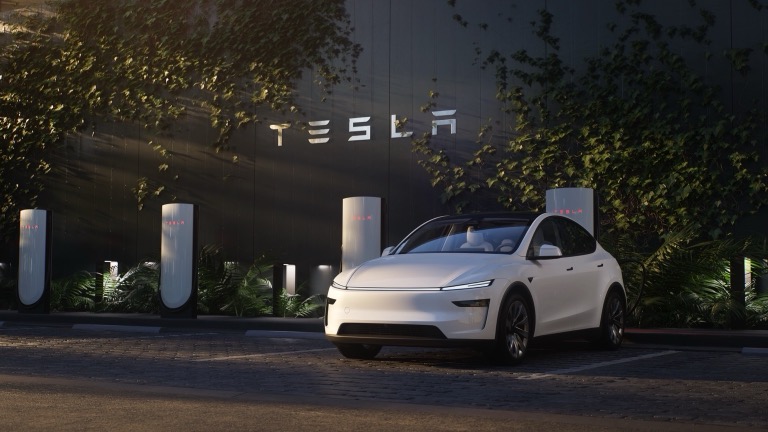
An efficient electric vehicle is one that uses the least electricity to travel the furthest distance. For buyers and owners this translates directly into lower running costs and a smaller environmental footprint. To compare models, the industry uses standardised laboratory tests – most commonly WLTP (Worldwide Harmonised Light Vehicle Test Procedure) – which report consumption in kWh per 100 km and an estimated range. Those figures are useful reference points but real-world consumption will vary with climate, driving style, payload and road conditions.
How efficiency is measured
- WLTP consumption: expressed as kWh/100 km, this figure accounts for laboratory-tested energy consumption under a standardised driving cycle. It’s now the usual benchmark for comparing models in Australia and Europe.
- Dashboard efficiency: while driving, your car reports energy drawn from the battery (usually in kWh/100 km or km/kWh). This is an instantaneous, real‑world measure and will differ from WLTP figures because of traffic, weather and driving behaviour.
- Charging losses: electricity from the grid doesn’t all end up stored in the battery. Conversion and thermal management losses, and losses during charging, mean you’ll typically use more grid energy than the battery consumption alone implies.
Top efficient EVs in Australia (WLTP-based)
This ranking is based on WLTP consumption figures (kWh/100 km) and a reported range for the model variants listed. The table below also shows an illustrative running cost at an electricity price of $0.25/kWh (25c/kWh). Note: model names and specifications can vary by trim and year; this list is updated dynamically as new models and WLTP figures are published.
- Tesla Model 3 – 13.8 kWh/100 km – 520 km – $3.45 / 100 km
- MINI Aceman SE – 13.8 kWh/100 km – 406 km – $3.45 / 100 km
- MINI Cooper SE – 14.1 kWh/100 km – 402 km – $3.52 / 100 km
- Hyundai IONIQ (variant) – 14.3 kWh/100 km – 327 km – $3.58 / 100 km
- Hyundai IONIQ 6 – 14.3 kWh/100 km – 614 km – $3.58 / 100 km
- Fiat 500e – 14.4 kWh/100 km – 311 km – $3.60 / 100 km
- Hyundai Kona Electric (Long Range) – 14.7 kWh/100 km – 505 km – $3.67 / 100 km
- Hyundai Kona Electric (Standard) – 14.8 kWh/100 km – 370 km – $3.70 / 100 km
- Polestar 2 (single motor / LR variants) – 14.8 kWh/100 km – 659 km – $3.70 / 100 km
- Tesla Model Y – 14.9 kWh/100 km – 466 km – $3.73 / 100 km
How this affects running costs
If an EV uses 189 Wh/km, that’s 18.9 kWh/100 km. At 25c/kWh, 18.9 × $0.25 = $4.73 per 100 km. That’s the simple grid-energy cost – but remember:
- Charging efficiency: home charger + on-board charger losses typically add 5-15% to the grid energy required. Fast charging (DC) may be less efficient than slow AC charging.
- Thermal management and preconditioning: in cold weather or very hot conditions, the vehicle will use energy to heat/cool the battery and cabin. Preconditioning while the car is plugged in reduces battery energy draw once you start driving.
- Driving behaviour: higher speeds dramatically increase consumption due to aerodynamic drag. Urban, low-speed driving benefits more from regenerative braking.
Australian context: what to consider
- Electricity prices vary by state, retailer and time-of-use. Typical residential rates (including network and retailer charges) vary widely – from well under 25c/kWh in some cases with solar or off‑peak plans, to considerably higher tariffs. Use your actual tariff to estimate realistic running costs.
- Rooftop solar and battery storage can reduce effective running costs by shifting charging to low-cost or self-generated power – but you must account for inverter losses, export limits and time-of-day usage.
- Public fast charging networks (Chargefox, Evie, NRMA, Tesla Superchargers, among others) are expanding across Australia. Public network tariffs and idle fees can noticeably affect trip cost.
- State incentives and registration concessions (where applicable) may reduce total cost of ownership but are not uniform across Australia.
Why dashboard and WLTP numbers differ
- WLTP is a standardised laboratory test intended for cross-model comparisons. It does not reflect every real-world variable.
- Dashboard figures show actual energy drawn from the battery during your trip. They do not account for charging/conversion losses and are sensitive to current conditions (temperature, speed, gradients).
What makes an EV efficient?
- Aerodynamics: lower drag coefficient and smaller frontal area reduce energy lost to air resistance, especially at highway speeds.
- Mass: lighter vehicles require less energy to accelerate, particularly in stop-start driving.
- Powertrain efficiency: motor and inverter design, and heat management, affect how much battery energy is delivered to the wheels.
- Rolling resistance: tyres, wheel size and vehicle suspension tuning matter.
- Regenerative braking: the effectiveness of a vehicle’s regen system recovers energy in urban driving.
In practice, sedans and smaller hatchbacks tend to be the most efficient EVs; larger SUVs and performance models trade efficiency for space and power.
Practical tips to improve EV efficiency (for Australian drivers)
- Precondition while plugged in: heat or cool the cabin and battery before departing to avoid drawing from the battery on the move.
- Use Eco/Range modes for everyday driving to limit power delivery and improve regen.
- Reduce high-speed highway driving where possible – energy use climbs with the square of speed.
- Keep tyres properly inflated and aligned; low rolling resistance tyres help.
- Remove roof racks and unnecessary weight.
- Plan routes to avoid excessive congestion and steep climbs when possible.
- For long trips, use DC fast charging judiciously; charging speed tapers as the battery fills, and charging at very high power can be less efficient.
- Consider time-of-use electricity plans or solar export strategies to charge at the lowest effective rate.
Conclusion
Efficiency is a central consideration when choosing an EV in Australia. WLTP consumption figures provide a useful and standardised way to compare vehicles, but real-world running costs depend on electricity tariffs, charging habits, climate and driving style. Smaller, more aerodynamic models generally top the efficiency charts, but the broader picture of ownership – charging infrastructure, incentives, and lifestyle – will shape which EV delivers the best value for you. Use WLTP as a starting point, monitor your car’s dashboard metrics, and adopt practical habits (preconditioning, eco modes, sensible speeds) to get the most from your EV.
FAQs
Q: What is WLTP and why does it matter?
A: WLTP (Worldwide Harmonised Light Vehicle Test Procedure) is a laboratory test that measures vehicle emissions and energy consumption under standard conditions. It’s the current benchmark for comparing EV consumption and estimated range between different models.
Q: Why is the figure on the dash different from WLTP?
A: Dashboard readings reflect real-time battery energy use during your drive and are influenced by temperature, terrain, speed and accessory use. WLTP is a standardised test – dashboard numbers will typically be higher or lower depending on conditions.
Q: How do I calculate the cost per 100 km?
A: Multiply the vehicle’s consumption (kWh/100 km) by your electricity price ($/kWh). Example: 15.0 kWh/100 km × $0.25/kWh = $3.75 per 100 km. Add ~5-15% for charging and conversion losses for a fuller estimate.
Q: Does fast charging cost more energy than slow charging?
A: Fast (DC) charging can be slightly less efficient due to higher heat losses and battery thermal management. It’s convenient for long trips but for routine home charging slower AC charging is usually more efficient and cheaper.
Q: How much does temperature affect efficiency?
A: Batteries perform best in a moderate ambient temperature range (roughly 20-25°C). Cold weather increases internal resistance and energy needed for heating; very hot conditions increase cooling needs. Preconditioning while plugged in mitigates these effects.
Q: Will my EV’s efficiency improve with software updates?
A: Yes – manufacturers sometimes release software updates that optimise powertrain efficiency, regenerative braking behaviour and thermal management, which can improve real-world consumption and range.
Q: Are WLTP figures the same across countries?
A: WLTP is an international standard, but range and consumption figures may vary by the specific vehicle configuration and testing lab. Local regulations and optional equipment can affect the numbers reported in Australia.
About EV Evolution
EV Evolution is the leading online platform dedicated to Australian electric vehicle owners and enthusiasts. We foster a vibrant community, delivering essential EV news and insights, and enhancing user engagement through our innovative, AI-powered chatbot for dynamic discussions. Our mission is to empower Australian electric vehicle owners and enthusiasts by fostering a vibrant, AI-driven online community that connects, informs, and advances the nation’s electric vehicle landscape.




